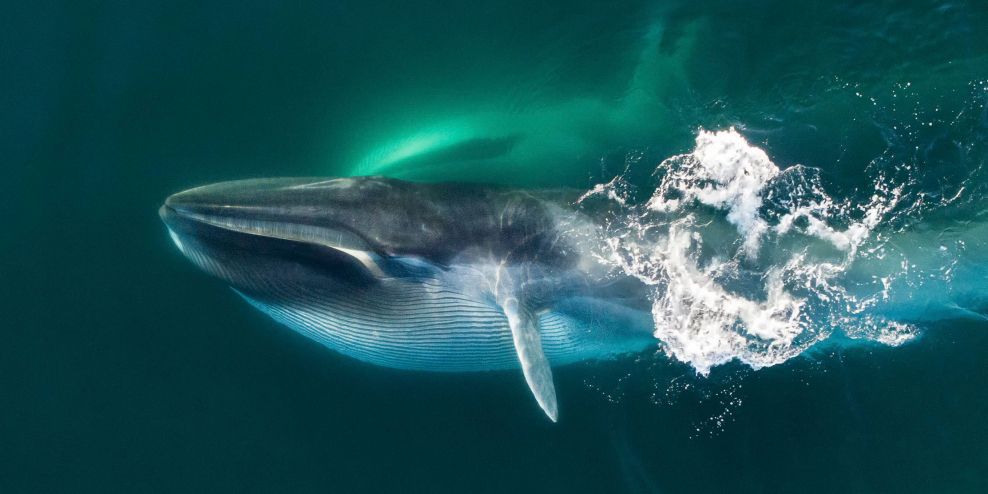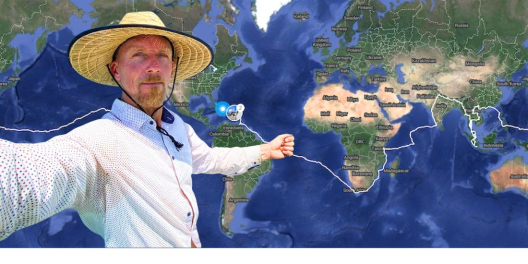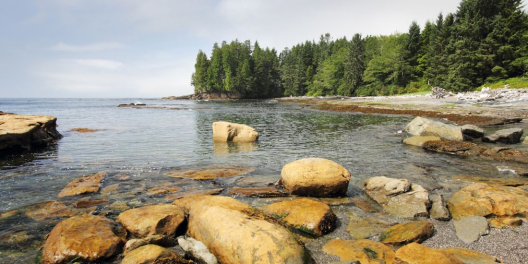Conservation groups have put in a ton of effort to protect our fin whales, and help their tiny populations recover.
Their efforts have paid off. Whale populations have grown enough to get them off Canada’s list of threatened west coast wildlife.
Fantastic news, but it might be bad timing.
The gigantic super speedy whale — nicknamed the greyhound of the sea— was nearly killed off by industrial whaling.
After spending years legally protected under the Species at Risk Act (SARA), US populations have finally made a comeback.
Only that comeback is just in time for boat traffic to increase as the liquefied natural gas terminal comes online in 2025.
The new shipping route will bring ship noise and a high potential for ship strikes. Combined that with climate change, a conservationists say we’ve got a recipe for disaster.
They warn that the little protection fin whales have is still very much needed to keep their populations from falling right back to where they were.
Although Pacific fin whales actually still meet the criteria for threatened status, Canada has reclassified them. That’s because surveys in US waters suggested that their fin whale populations were increasing. The committee on endangered wildlife report thought whales could migrate and boost fin whale numbers in Canada.
Eric Keen is a whale researcher and science director for the North Coast Cetacean Society. “A lot of science in the document is sound but what’s most confusing to me is (the committee’s) conclusions drawn from the evidence,” he told The Province.
“They acknowledge the unknowns, but then conclude that it’s appropriate at this time to reduce their status. And that’s where I take issue.”
Without their threatened status, the federal government’s obligation to identify and protect fin whales’ critical habitat disappears, Keen said.
The wild thing is, even though Canada’s evidence for taking the whales off the endangered list is based on US data, fin whales continue to be listed as endangered in the US.
So the US thinks they’re endangered, but Canada doesn’t? Even though we share an ocean?
But matters get even more interesting. Research led by Keen has found up to 120 whales living in a hot spot in the Kitimat fjord system — something found nowhere else in the world.
“They are usually thought of as an offshore oceanic species that never comes close to land,” Keen said.
“But this exception is making us see that there’s much more to the species than we thought … and maybe these coastal habitats are essential to their full recovery.”
This spot also happens to sit along the proposed shipping route back and forth to the LNG terminal.
That likely means a lot more fatalities from ships.
So the federal government says fin whales aren’t endangered anymore because US fin whales are increasing and it also means they don’t have to worry about more whale strikes near the LNG port? How convenient.
Climate-induced marine heat waves pose a further threat. Heat waves could shift where and how much food is available in coastal ecosystems.
Fisheries and Oceans Canada (DFO) is asking for public feedback on the issue until December 2nd.
Let them know your thoughts, and let’s keep our whales as protected as possible.









